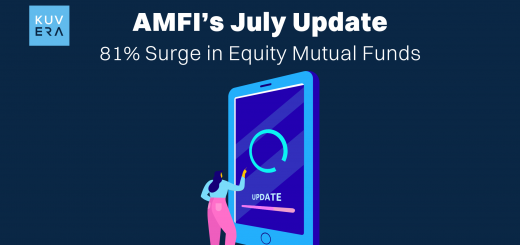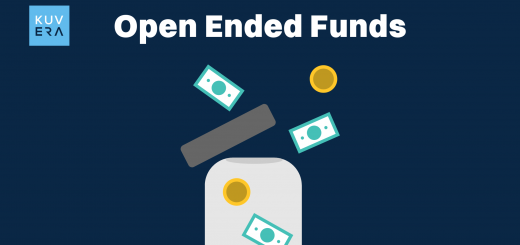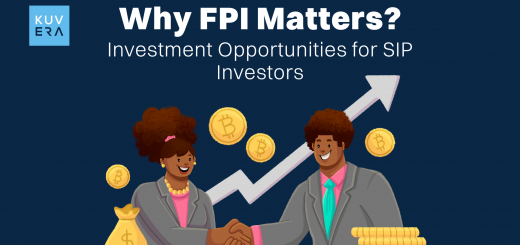What are Mutual Funds?
A mutual fund is a collection of funds that are professionally managed by a fund manager.
A trust that invests money in stocks, bonds, money market instruments, and/or other securities after collecting funds from a number of participants who have similar investing goals. By determining a scheme’s “Net Asset Value,” or NAV, the income/gains earned from this collective investment are dispersed proportionately among the investors after taking into account any necessary expenses and levies.
Simply explained, a mutual fund is made up of the money that many different investors have pooled together.
Let’s get a grasp on the concept of “Net Asset Value,” also known as NAV. A mutual fund unit, like an equity share, will have a price at which it can be traded. However, a mutual fund unit will also have a Net Asset Value per Unit.
The net asset value, or NAV, of a fund, is the total market value of the shares, bonds, and securities that are held by the fund on any given day (as reduced by permitted expenses and charges). The net asset value (NAV) of a unit is the market worth of all of the units in a mutual fund scheme on any given day, after deducting all of the scheme’s expenses and obligations and adding in any income that has been earned, divided by the total number of outstanding units in the scheme.
Investors who do not have the means to invest significant quantities of money or who do not have the interest or the time to conduct extensive market research but still want to increase their wealth can consider purchasing shares in mutual funds.
The money that is invested in mutual funds is then invested by qualified fund managers in a manner that is consistent with the overall goal of the scheme. In exchange for its services, the fund house will charge a nominal fee, which will be subtracted from the total amount invested. The Securities and Exchange Board of India has the authority to regulate the fees that mutual funds charge, and those fees are subject to certain limits that it establishes (SEBI).
India has one of the highest rates of personal savings in the world. This propensity for wealth development makes it vital for Indian investors to choose investment options other than the historically preferred bank fixed deposits and gold, which are mutual funds. Mutual funds, on the other hand, have become a less popular choice for investors due to a lack of information.
Mutual funds give investors a diverse range of product options from which to choose when making financial investments. Expenses after retirement, money for children’s education or marriage, money for a house purchase, and so on are all different types of investment goals; consequently, the goods required to fulfil these goals also vary. The Indian mutual fund sector provides a wide variety of investment options and plans to satisfy the requirements of all kinds of investors.
Retail investors have a great opportunity to participate in and profit from positive trends in the capital markets through the use of mutual funds, which offer an ideal investment vehicle.
Choosing the right mutual fund to invest in can be difficult, despite the fact that doing so could result in financial gains. Therefore, investors ought to conduct appropriate research on the fund in question, taking into account the risk-return trade-off and the time horizon, or else they ought to seek the counsel of a qualified investment adviser.
In addition, in order for investors to get the most out of their investments in mutual funds, it is essential for them to diversify their holdings among a variety of fund types, including equity, debt, and gold, amongst others.
Even though all types of investors can benefit from mutual funds, a mutual fund is a superior alternative for novice investors since it provides access to all of the market’s benefits all at once.
How Do Mutual Funds Work?
For illustration’s sake, let’s assume that Quant Mutual Fund is going to introduce a new mutual fund program. Let’s use the example of the Quant Mid-cap fund. Let’s assume, for the sake of simplicity, that the scheme brings in a total of 1 crore from a hundred different investors. One lakh rupees (INR) are invested by each individual investor.
The fund firm issues the units with a NAV of Rs.10. Because of this, every investor receives 10,000 units. Therefore, the fund house has distributed a total of 10 lakh units out of the total number of units that it has issued.
The goal of Quant Mid-Cap Fund is to spread its investments over mid-cap companies that are in the range of 101st-250th companies in terms of full market capitalization(According to SEBI, it is mandatory for a mid-cap fund to invest a minimum of 65 percent of total assets in stock and equity-related securities of mid-cap companies).
In order to achieve the objective, The fund manager conducts research and selects the 50 mid-cap stocks as per his expertise and meets SEBI’s guidelines. Let’s assume, the fund manager selects the shares and makes equal investments in each stock. Thus, the selected 50 stocks make up the equity fund.
Considering that the fund’s Assets Under Management (AUM) are INR 1 crore, the investment per stock is approximately INR 2 lakh. Thus, the equity fund‘s portfolio now includes these stocks. Additionally, the fund manager actually deals and invests in large amounts. Research underpins each and every investment. The fund manager is a proponent of investing in stocks with high returns. The fund additionally keeps a cash balance. It has to do with investor redemption.
Appreciation In Net Asset Value
The portfolio doesn’t experience any changes in holdings or investor count after a month. Eventually, as the stock prices began to fluctuate, the portfolio value keeps shifting. The overall worth of the portfolio rises as the prices rise. The portfolio’s value rises to INR 1.50 crores in this scenario. The fund units of 10,000 remain unchanged, hence the new NAV is now INR 15.0 (INR 1.50 crore/10 lakh units).
Because of this, investors’ investment value increases to INR 1.50 lakh (10,000 units * INR 12.5 NAV). Consequently, investors get a profit of INR 50,000 (INR 1.2 lakh minus INR 1 lakh). Additionally, the benefits are 50% [(INR 50,000/INR 1 Lakh)*100] in percentage terms.
Redemption
Investors sell or redeem their holdings. A total of 1,00,000 units were redeemed for this fund. The total outflow in terms of value is INR 15 lakh (INR 15*1,00,000 units). The fund’s assets under management (AUM) decreased to INR 1.35 crore as a result. In the end, there are just 9 lakh units in all. Therefore, the NAV is still 15 INR per unit.
First, the fund manager pays investors to handle redemptions by using the cash balance in the portfolio. In addition, he has the option to sell some shares if necessary. However, selling stock in companies with little upside potential would be a bad idea. These choices are supported by thorough research.
List of most eminent fund houses in India:
| S.No. | Asset Management Company | Average AMU (Cr.)(INR) |
| 1. | SBI Mutual Fund | 64,747,434.71 |
| 2. | HDFC Mutual Fund | 41,530,657 |
| 3. | ICICI Prudential Mutual Fund | 46,546,815.57 |
| 4. | Nippon India Mutual Fund | 27,943,136.70 |
| 5. | Axis Mutual Fund | 24,550,973.22 |
| 6. | DSP Mutual Fund | 10,668,194.05 |
| 7. | Kotak Mahindra Mutual Fund | 28,200,166.48 |
| 8. | Tata Mutual Fund | 8,836,742.34 |
| 9. | Aditya Birla Sun Life Mutual Fund | 28,152,709.99 |
| 10. | L&T Mutual Fund | 7,157,050.52 |
What Is An ETF and How does It Work?
An exchange-traded fund, often known as an ETF, is a mutual fund that mimics the performance of an index or a commodity or bonds, or a diversified portfolio of assets. ETFs are often not actively managed by a portfolio manager since their performance depends on the performance of an underlying asset or commodity price. Their objective is not to outperform the corresponding index.
On a stock exchange, these can be bought and sold. ETFs’ market price changes during the day. Its value is established using the stock or underlying asset’s net asset value. The fact that they can be purchased for a lower cost/expense ratio and provides high liquidity, makes ETFs attractive to individual investors.
When compared to investing in a single stock, ETFs provide diversity. The ability to invest across markets, industries, geographies, or asset classes is increased. ETFs are a group of equities, thus they are traded in large volumes. These large volumes imply a high level of liquidity. As a result, it makes entering and leaving the positions quite simple.
ETFs have recently surpassed other investing options in popularity. ETFs are popular among investors who find it difficult to research and choose a stock for their portfolio. ETFs duplicate the NSE, and BSE indices. They seek returns that are roughly equal to the increases in the equities included in the index. ETFs come in a variety of forms, including equity, gold, world indices, and debt.
Equity Exchange Traded Funds combine the advantages of equity mutual funds and stock investments into a single investment product. Additionally, because the ETFs replicate the index, their holdings are completely transparent.
Top Companies Offering ETFs in India:
Since ETFs are a sub-category of mutual funds, major fund houses or asset management companies have one or other ETF offering such as Aditya Birla Sun life, Nippon India Mutual Funds, SBI Mutual Funds, ICICI Prudential Mutual Funds, DSP Mutual Fund, HDFC Mutual Fund, etc.
ETF Vs Mutual Funds
ETFs are essentially a sub-category of mutual funds. However, there are a few crucial distinctions to be aware of while deciding which is best for you.
-
Trading Flexibility
ETFs are freely traded on the market and can be purchased or sold at the investor’s discretion. Their market price is accessible in real-time, just as it is for common stocks. Units of mutual funds can only be purchased or sold by submitting a request to the fund house. NAV represents the unit price of a mutual fund.
-
Mutual funds and ETFs are priced differently
Mutual funds only adjust their prices once every day, after the markets close. The price of a share in a mutual fund is formally referred to as the net asset value (NAV) because it represents the total value of the portfolio, not just a single holding. ETF share prices are similar to stock share prices in that they fluctuate continuously throughout the day based on market buying and selling activity. Consequently, they could be more volatile than mutual funds.
-
Fund management
Most mutual funds are run by a fund manager with a lot of experience who makes all the investment decisions on behalf of the investors. ETFs, more often than not, are passive funds and the fund managers take a back seat in the management of the funds. There are also some ETFs that are actively managed, but the fees for those are higher.
-
Expense
Typically, ETFs do not require active management. Because of this, investing in ETFs has cheap fees and expenses. In contrast, the fund manager for mutual funds typically, actively makes investment decisions on behalf of the investors. As a result, the costs associated with mutual fund management are higher.
-
Lock-in Period
There is no required minimum holding period for ETFs, and investors are able to sell their investments whenever they want. A three-year lock-in period is required for mutual funds like ELSS (Equity Linked Savings Scheme). The investment cannot be disposed of during this time span. Depending on the mutual fund scheme selected, this can range from 9 days to 3 years.
-
Tax-Efficiency
ETFs, as well as regular mutual funds, are taxed basis their nature, long-term capital gains tax in the case of equity ETFs as well as equity mutual funds is 10%, however, in the case of debt mutual funds and debt ETFs, it is 20% along with indexation benefits. Even short-term taxation regime is similar for both.
FAQs
Q.1. Which is better: mutual fund or ETF?
You can create a diverse investment portfolio using either of the aforementioned investment choices. There are numerous considerations that need to be taken into account while deciding which choice should be selected, such as ease of selling the investment, risk tolerance, time horizon for investing, taxation implication, and financial objectives. However, as mentioned above, equity exchange-traded funds combine the advantages of equity mutual funds and stock investments into a single investment product.
Q.2. Why choose an ETF over a mutual fund?
You may choose ETF if –
-
- If you engage in active trading. You like to set limit orders and stop-limit orders or use margin in your investing techniques. These possibilities are available because ETFs trade similarly to stocks, however, these tactics cannot be used with mutual funds.
-
- If you desire to acquire inexpensive exposure to a specific market niche without studying individual companies. Numerous ETF choices serve as proxies for speciality market indexes.
Q.3. Are ETFs safer than mutual funds?
In comparison to hand-picked equities and bonds, mutual funds and ETFs are considered low-risk investments. Mutual funds and ETFs entail roughly the same degree of risk, despite the fact that investing, in general, is always risky. It depends on the specific mutual fund and ETF in which you invest.
Q.4. Which is the best ETF in India?
Historically, Index ETFs especially those tacking Nifty and Sensex have outperformed other ETFs.
Did you know? You can now invest in arbitrage funds on Kuvera:
Step 1: Download the Kuvera app or visit our website.
Step 2: Create your account on Kuvera by completing the mandatory KYC procedure. This will hardly take a few minutes. Once that’s completed, select the ‘Invest’ option on our homepage after which you can select ‘Mutual Funds’ and “ETF”.
Step 3: Kindly go through the list of all zero-commission direct plans of Arbitrage schemes to start investing.
Interested in how we think about the markets?
Read more: Zen And The Art Of Investing
Watch/hear on YouTube:
Start investing through a platform that brings goal planning and investing to your fingertips. Visit Kuvera.in to discover Direct Plans and Fixed Deposits and start investing today.
#MutualFundSahiHai #KuveraSabseSahiHai!











